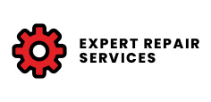Guide to Maintaining Floor Scales
Posted by Jon M on Sep 5th 2023
Floor scales play a crucial role in a variety of industries, from manufacturing and warehousing to logistics and agriculture. These heavy-capacity weighing scales are designed to handle large and bulky items, ensuring accurate measurements that contribute to efficient operations and precise inventory management. However, like any equipment, floor scales require regular maintenance to function optimally and provide accurate readings over the long term. In this blog, we'll explore the importance of maintaining floor scales, the key steps involved in their upkeep, and tips for ensuring their longevity.
The Importance of Maintaining Floor Scales
Floor scales are often subjected to heavy loads, harsh environments, and daily wear and tear. Neglecting their maintenance can lead to inaccurate readings, equipment breakdowns, and increased operational costs. Regular maintenance not only ensures accurate measurements but also extends the lifespan of the scales, reduces downtime, and minimizes the risk of accidents or injuries.
For high-volume operations with multiple floor scales such as warehouses, it is especially important to keep a regular maintenance schedule. Any equipment breakdowns can lead to missed shipments, order backlogs and additional carrier costs for missed pickups. Following a strict maintenance schedule can help to prevent these issues and keep operations running smoothly.
Key Floor Scale Maintenance Steps
Regular Cleaning
Regularly cleaning floor scales helps to prevent issues with corrosion, contamination, and measurement errors due to binding. Remove debris, dust, and any spilled materials from the weighing platform. Use a soft brush, a shop vac, or compressed air to clean hard-to-reach areas. Avoid using abrasive cleaners that could damage the scale's surface. Make sure you also clean underneath the floor scale platform. This helps protect exposed components on the underside of the scale including the junction box, load cells and wiring. Binds can occur from caked-on debris that will cause inaccurate readings. Some floor scales are designed for easier cleaning with lift off tops that allows access to the internal bracing and components. These are especially useful in harsh environments where constant cleaning is required.
Water damage is a common cause of failure in load cells. To help prevent damage caused by high pressure or steam cleaning, be sure to use floor scales with an IP rating of IP69K. This is especially important for food, chemical and pharmaceutical industry uses.
Don't forget to clean the indicator! Using mild cleaners and water, clean the indicator housing and display to remove any contaminants, dust and debris that could inhibit visibility of the display or negatively affect performance of the keys.
Inspection and Repairs
Periodic inspection of your floor scales are imperative to ensure optimal performance and long-life. Try to follow a regular inspection schedule to help prevent any unforeseen downtime due to failure or inaccuracy. Be ready to take notes of any issues you may discover so you can follow up with correcting the issues after. During your inspection, check for signs of damage or wear, such as cracks, corrosion, or bent components. Check all components including the following:
Platform
Visually inspect the floor scale platform for signs of damage. This would include cracks, bends, dents or deterioration. Minor wear and damage shouldn't cause any issues, as long as the damage doesn't impact the performance of the load cells and corner load. If the platform is significantly damaged, it is highly recommended to replace the entire scale.
Junction Box
Visually inspect the junction box for damage or leaking. Make sure load cell cables are securely connected and thatno water or debris is inside the box. Clean out if necessary.
Load Cells
Visually inspect load cells for damage or binding. Stuck debris should be cleaned off to prevent binding. If there is any visual damage to the load cell, replace immediately. Be sure to replace with an equivalent load cell.
Cable
Visually inspect all cables include the load cell cables to junction box, and the homerun cable to the indicator. Check for pinching and correct. If you discover any damaged cable, replacement of the cable or entire load cell is recommended.
Scale Feet
Visually inspect floor scale feet for damage or wear. Check for damaged thread or loose fitment. If the feet are damaged, replace immediately. While you are at it, adjust all of the feet ot ensure the floor scale is level for optimal performance.
Indicator
Visually inspect the indicator for damage to the screen, keypad or housing. Check the power cable and the homerun cable for damage as well. While you're at it, open up the indicator housing if possible to make sure there is no water or debris inside. This is also the time to make sure the cord grips are tight.
After visual inspection, power up the indicator and test the keypad and display to ensure operation. Run through the user menu and various scale functions, testing each key, and verify that all functions are working properly.
Post-Inspection Repair or Replacement
After you've completed your inspection, take note of all of the damaged or inoperable components. Depending on the extent of the damage, cost of components and/or service, as well as the age of the scale, it might be advisable to replace it instead. The general rule of thumb is that if repairs cost more than 50% of the value of the scale, it is likely better to replace it with a new unit.
Is it time to replace your floor scale? Take a look at some helpful links below.
What to Consider When Buying a Floor Scale
Calibration
Regular calibration is essential to maintain the accuracy of floor scales. Perform checks using known weights, preferably with calibration weights, to ensure that the scale is providing precise measurements. Calibrate the scale after any repairs or adjustments. Checking the calibration on a regular schedule will ensure consistent performance.
If you don't have your own calibration weights, hire a scale service provider like Scales Plus to perform your inspections and calibrations.
Documentation
Maintain a record of all maintenance activities, calibration checks, and repairs. This documentation helps track the scale's performance over time and makes decisions easier regarding replacement or upgrades. For quality systems that require calibration reports, consider hiring a service company like Scales Plus to maintain a regular inspection and calibration schedule.

Did you know you can order floor scales from Scales Plus with NIST traceable and ISO 17025:2017 calibration reports? Learn more about our scale calibration services.
Professional Floor Scale Service
Maintaining floor scales is not only essential for accurate measurements but also for the overall efficiency and safety of your operations. Regular cleaning, calibration, and inspections are key to ensuring the longevity and reliability of your floor scales. By following these maintenance practices, you can optimize the performance of your floor scales and enjoy their benefits for years to come. Remember, a well-maintained scale is an investment that pays off in improved accuracy, productivity, and cost savings.
Whether you're looking for a new floor scale and need it provided with a traceable calibration report, or need on-site service within our service area, look to Scales Plus to provide everything you need to keep your floor scales operating at peak performance.





